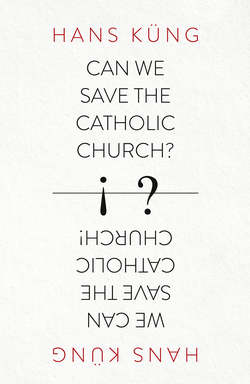Читать книгу Can We Save the Catholic Church? - Hans Kung - Страница 32
First Diagnosis
ОглавлениеThe fact that, during the course of the first Christian centuries, first the church in the city of Rome as a whole, and then only later, and gradually, its bishop came to enjoy a central position in the Church is incontestable. From the history of the rise of Rome and its bishop to leadership in the Church, we can learn to appreciate how a papal ministry of service to the unity of the Church centred in Rome and founded on the traditions of the two chief apostles, St Peter and St Paul, could still benefit Christendom in the twenty-first century, provided that the role played by this centre is exercised in the spirit of the Gospel. But there is nothing in the New Testament or in the early history of the Church that supports a claim to domination or jurisdictional primacy by either the Apostle Peter or the church in Rome, and much less by its bishop. In fact, as we shall see later, most often the exercise of this claim promoted neither unity nor harmonious interaction, but increased dissension and even led to schism. In the twenty-first century there is even less likelihood that any claim to primacy in a jurisdictional sense will find acceptance in Christendom. Nor does the constant repetition and pompous celebration of the Roman ideology of primacy and power help when the claim itself is built on sand. The only thing that might help to restore the credibility of this institution is a frank, self-critical reflection on the humble and often fallible role played by the biblical figure of Peter and on the unpretentious services performed by the early Roman church, in the form of what Ignatius of Antioch, in his Letter to the Church of Rome, written probably around AD 110, called a ‘primacy of love’. In short, the Church needs a Petrine ministry, not a Petrine primacy.
